Long the object of conquests, the city of Jerusalem has changed hands innumerable times since King David established it as the United Kingdom's capital 3,000 years ago.
When the modern State of Israel declared independence in 1948, Jordanian forces captured East Jerusalem and the Old City, cutting the capital in half and forcing some Jewish residents to flee.
Nearly 20 years later, on the 28th day of the Hebrew month of Iyar, 5727, or June 7, 1967, Israel successfully beat back the Jordanian army in response to heavy shelling of civilian areas. The Israel Defense Forces entered the Old City and East Jerusalem, ending the city's division and unifying the capital once again.
Israel officially annexed the captured parts of the city in 1980, a move that wasn't fully recognized internationally, and which is still the subject of controversy today.But with rare exceptions, the City of Peace mostly lives up to its name. Residents of all of Jerusalem's diverse neighborhoods work, shop, and play side by side as people go about their day-to-day lives.
As such, the anniversary of Jerusalem's reunification, or Jerusalem Day, is cause for celebration among Israelis, with parades, concerts, and other events held annually.
In honor of Jerusalem Day this year, the City of David Archive has released a new selection of photos taken in Jerusalem over the last 150 years. Here are some of our favorites.
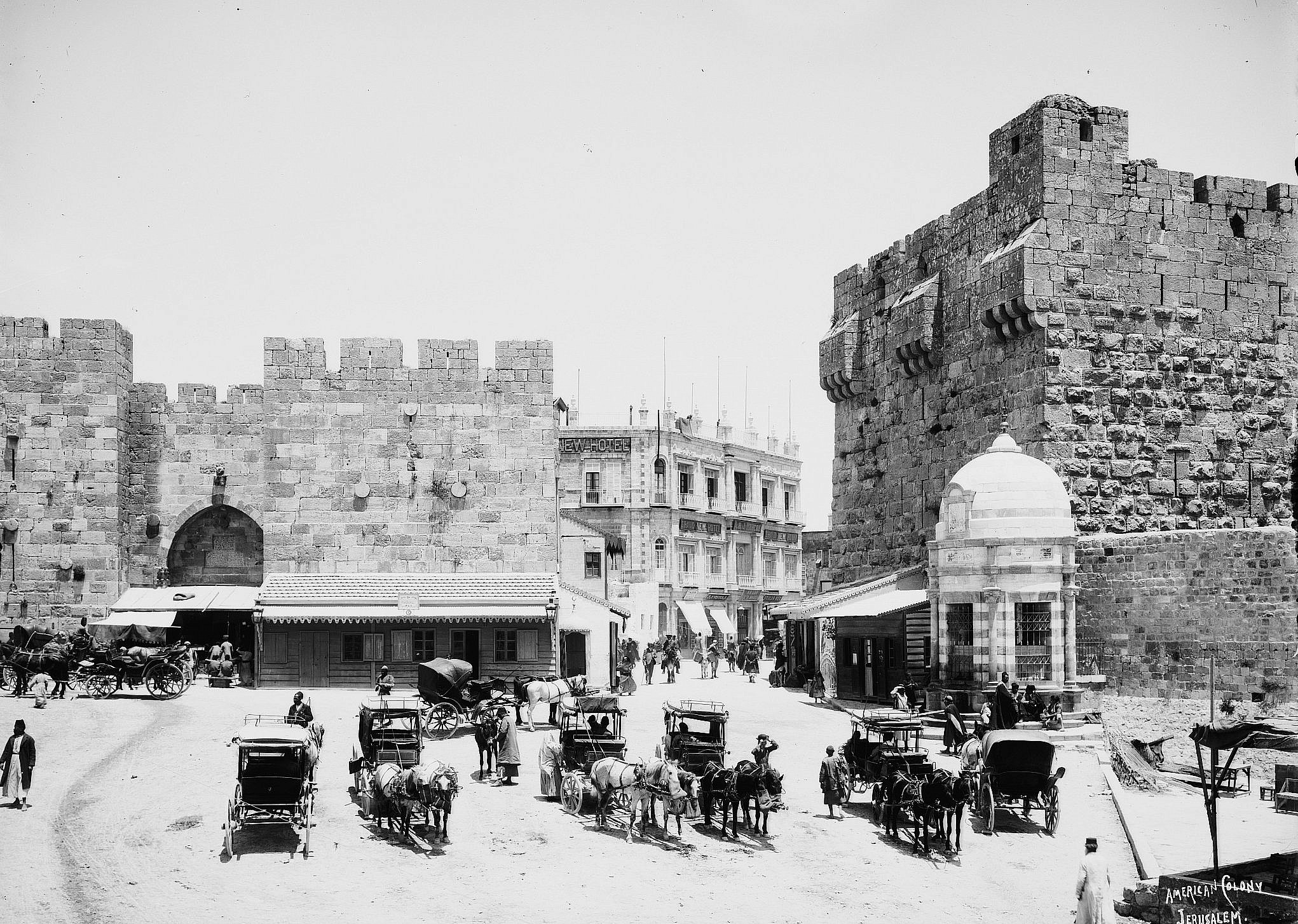
Breach in the Old City wall, near Jaffa Gate, ca. 1898-1916. (American Colony)
This view of the breach in the Old City wall near the Jaffa Gate can still be seen today — though now, it is bustling with car and motorcycle traffic instead of horses and carriages.
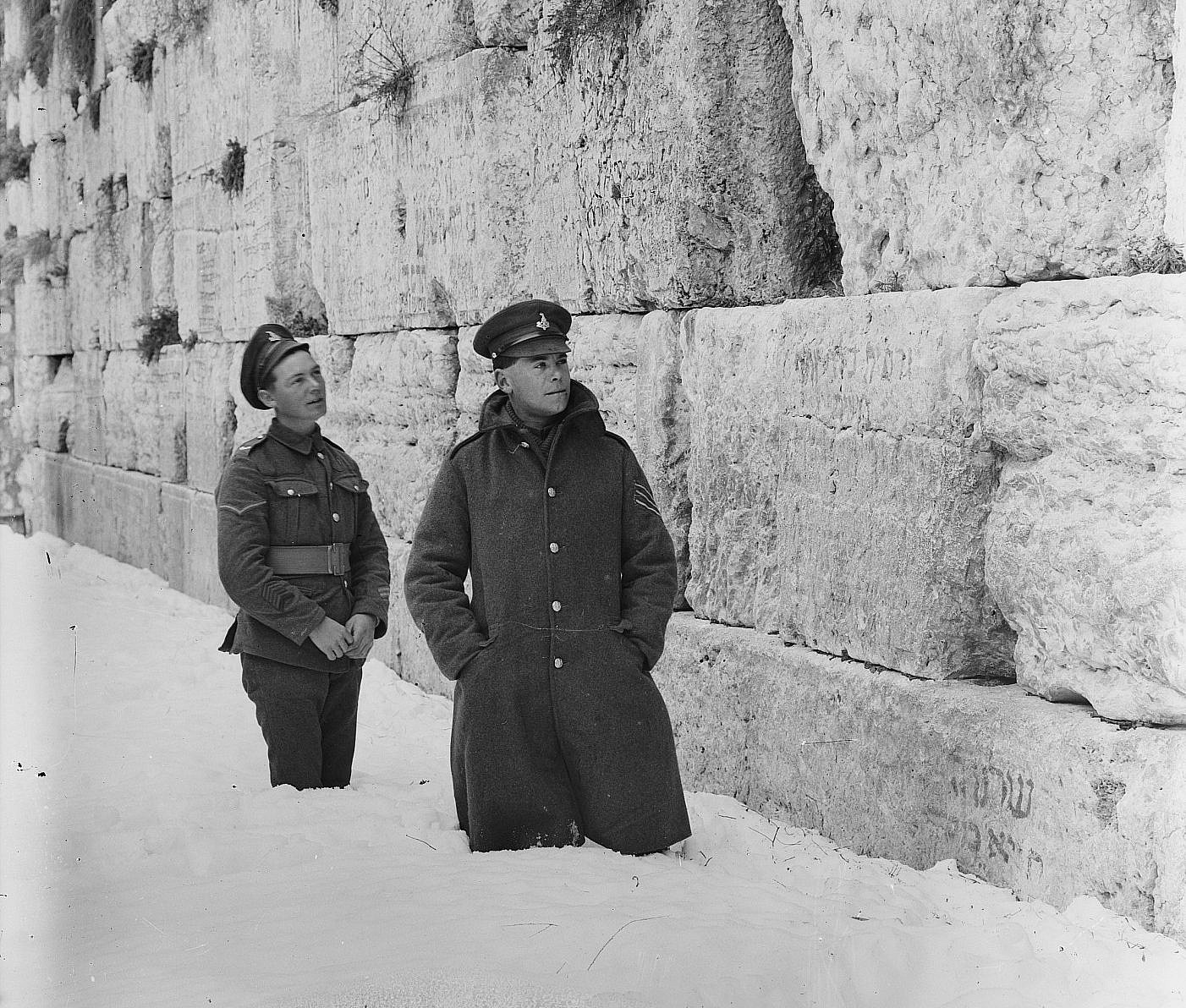
British soldiers at the Western Wall, 1921. (American Colony)
Every once in a while, the usually mild-weathered Jerusalem gets some snowfall. This photo of two British soldiers shows the aftermath of what must have been quite a blizzard in 1921, with snow coming up to their knees as they stand in front of the Western Wall.

Men and women pray side by side at the Western Wall, ca. 1898-1946. (American Colony)
Today, the issue of men and women praying together at the Western Wall has become a contentious one. In this pre-state photo, women and men pray side by side without the traditional mechitzah, or gender separation barrier, that many Orthodox synagogues have.

A southern view of the Temple Mount, 1931. (Library of Congress)
This southern view of the Temple Mount, taken in 1931, includes a wide swath of cityscape. Taken nearly 90 years ago, it is a far cry from the much more crowded urban landscape today, with wide-laned highways and towering buildings.
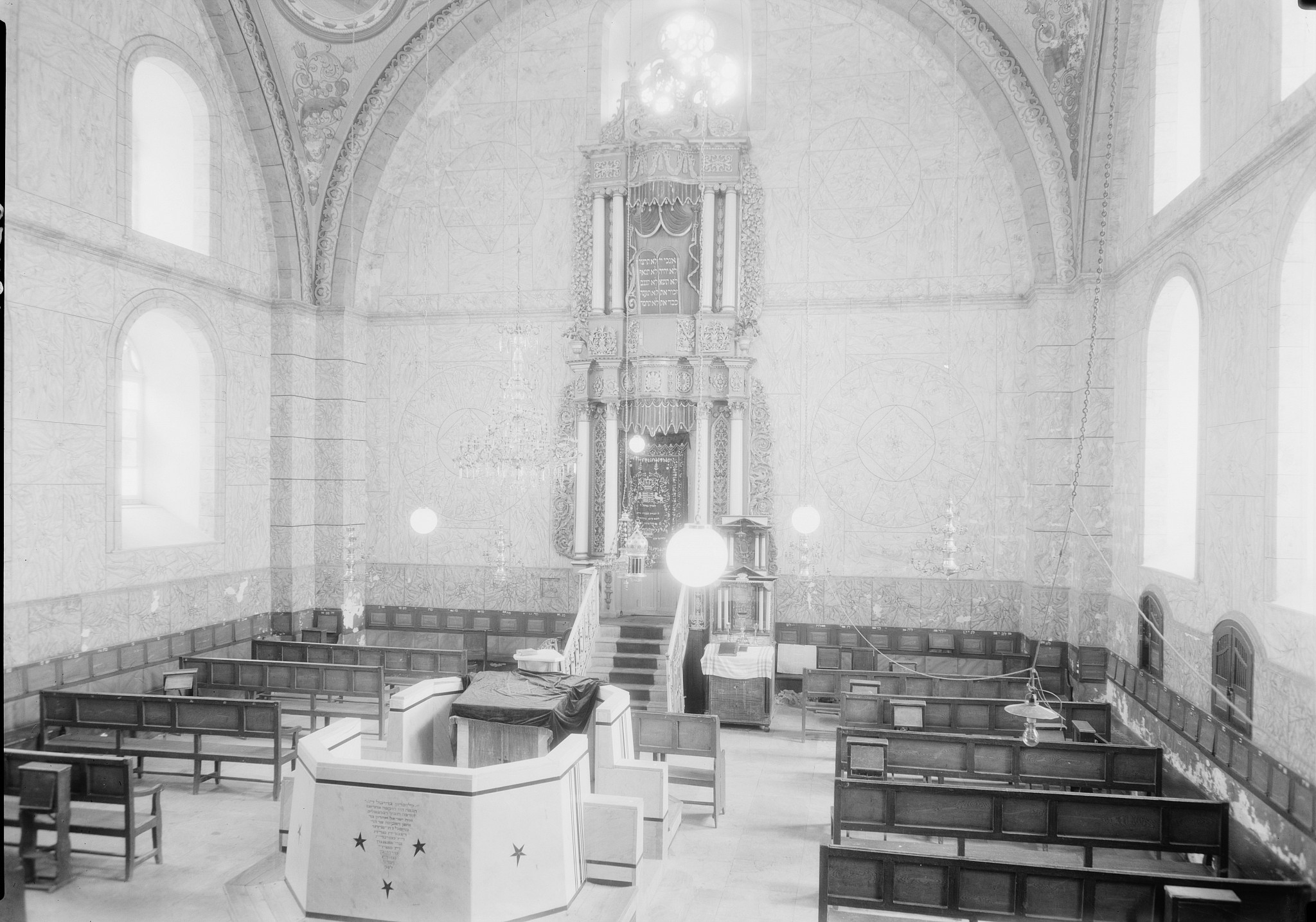
Interior of the Old City's Hurva synagogue, ca. 1934-1939. (Matson)
Originally built in the 1700s, the beautiful Hurva synagogue was destroyed twice — once in 1721, and again in the 1948 War of Independence, not long after this photo was taken. Today, the Hurva has been rebuilt again, and visitors come to pray and take photos of its ornate interior.
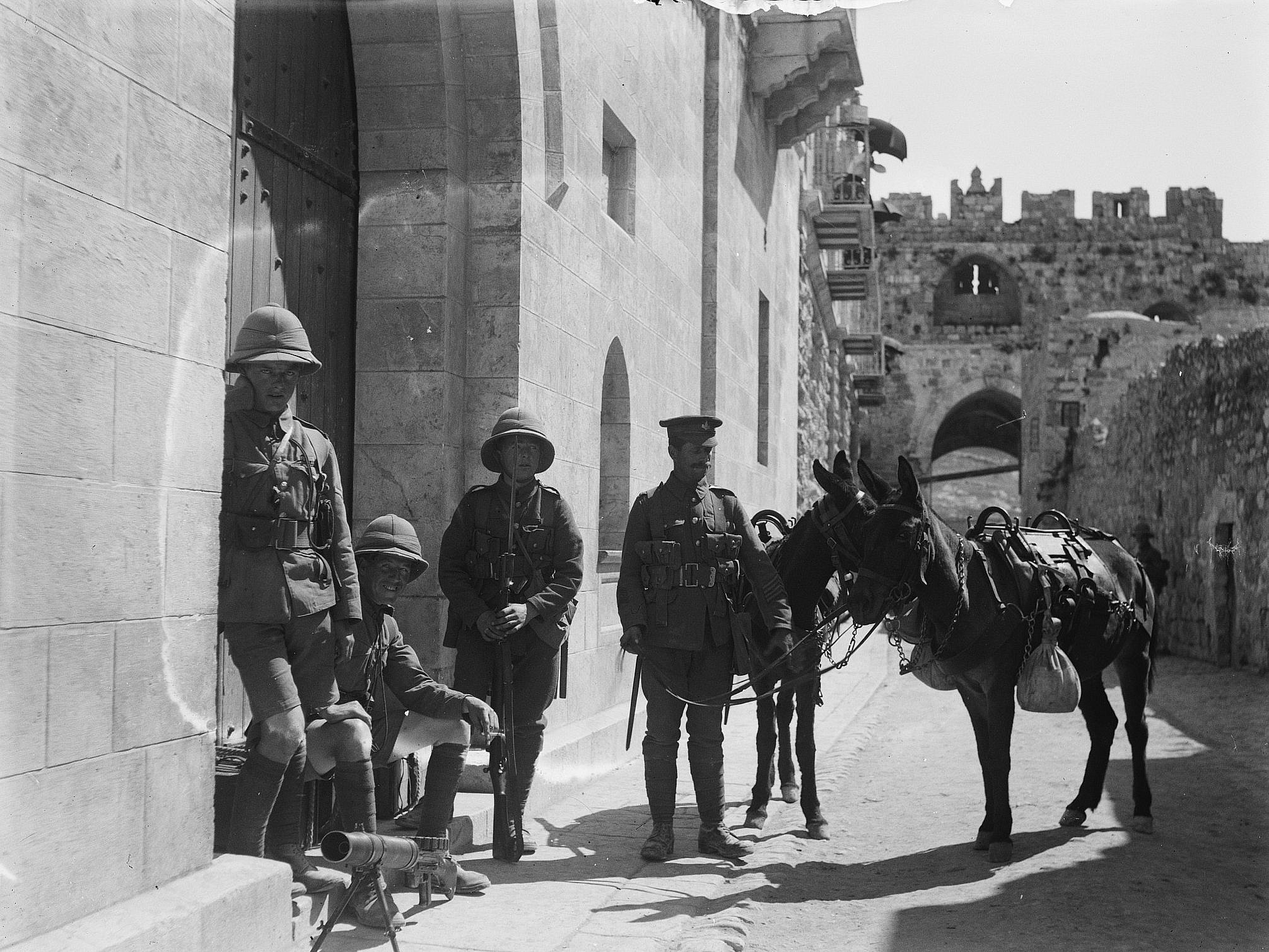
British soldiers in the Old City, April 8, 1920. (American Colony)
These British soldiers are enjoying some down time and a lovely April sun in the Old City, in this photo taken in 1920.
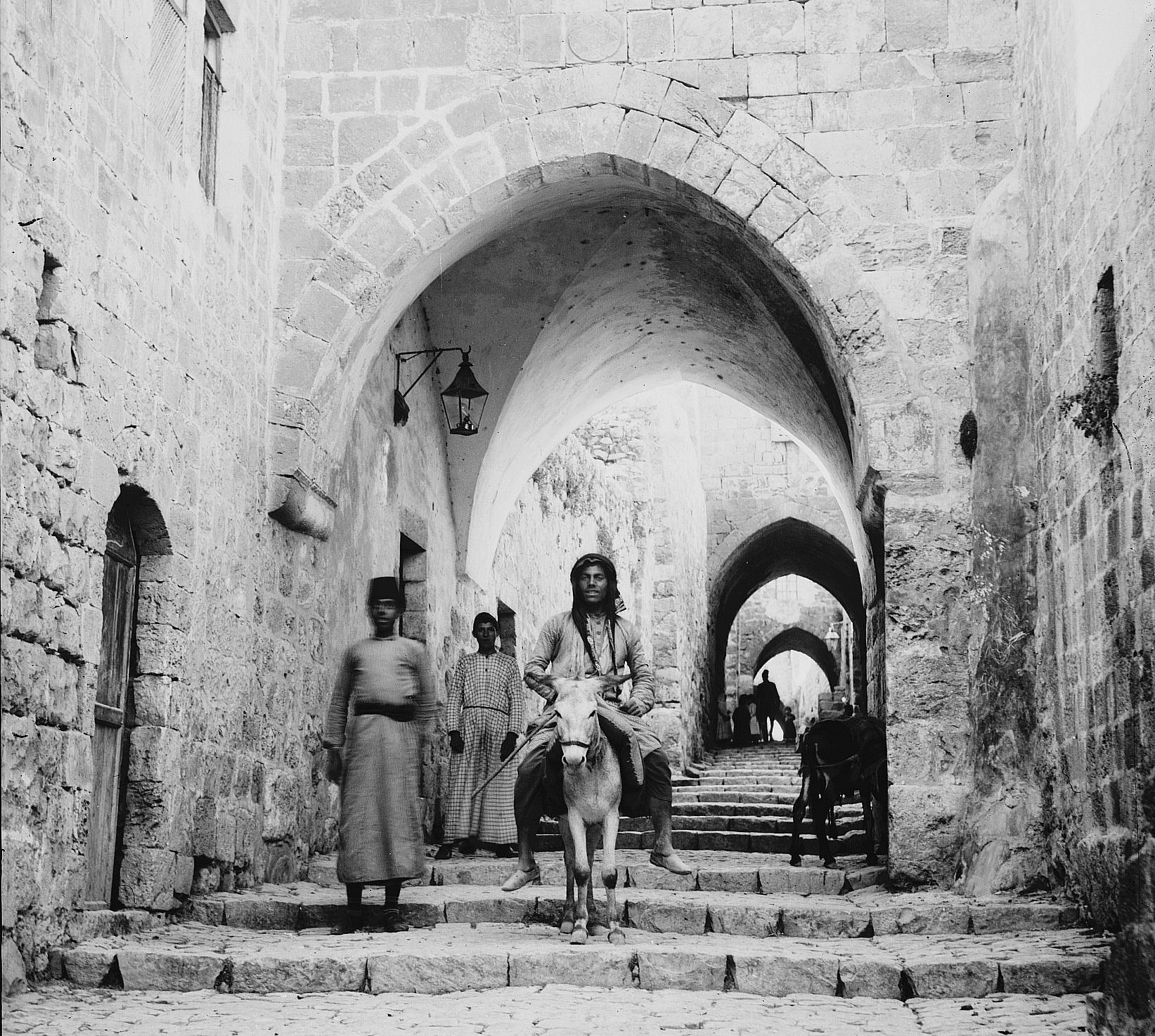
Old City alleyways, ca. 1900-1920. (American Colony)
Even today, riding a donkey might be the easiest mode of transportation when navigating the narrow alleyways of the Old City. Of course, very few Old City residents own donkeys — but it's not unusual to see the occasional golf cart.

Merchants outside the Damascus Gate, ca. 1898-1919. (American Colony)
This photo was taken around 100 years ago outside the Old City's Damascus Gate. Then, as now, merchants would gather outside the gate to hawk their wares because of the heavy foot traffic.
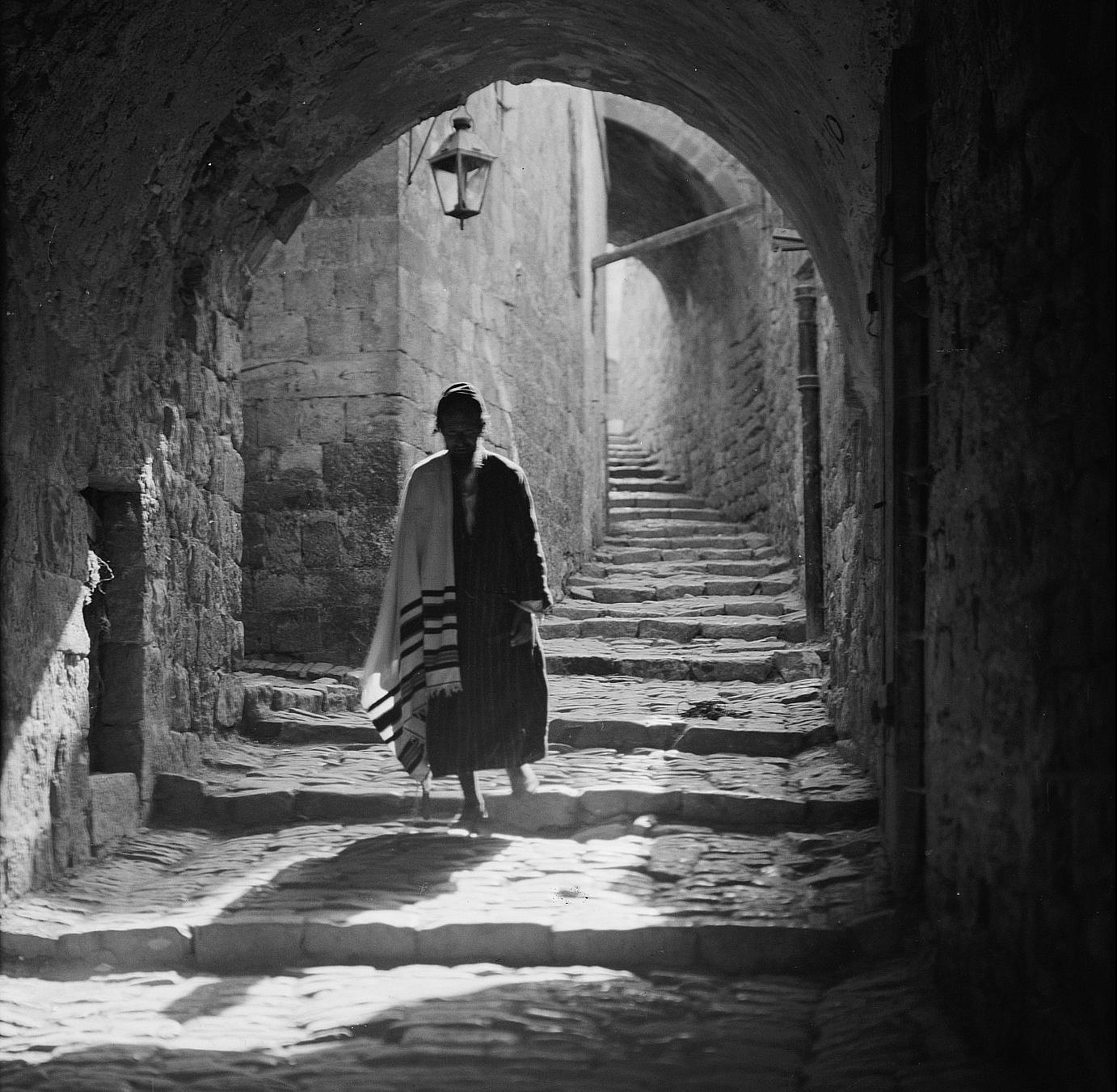
A Jewish pedestrian in the Old City, ca. 1934-1939. (Matson)
A Jewish resident of the Old City walks down the stairs in a photo taken between 1934 and 1939. He is wearing the long frock of the Jerusalem Hasidim with its distinctive stripes, and carries a traditional prayer shawl.
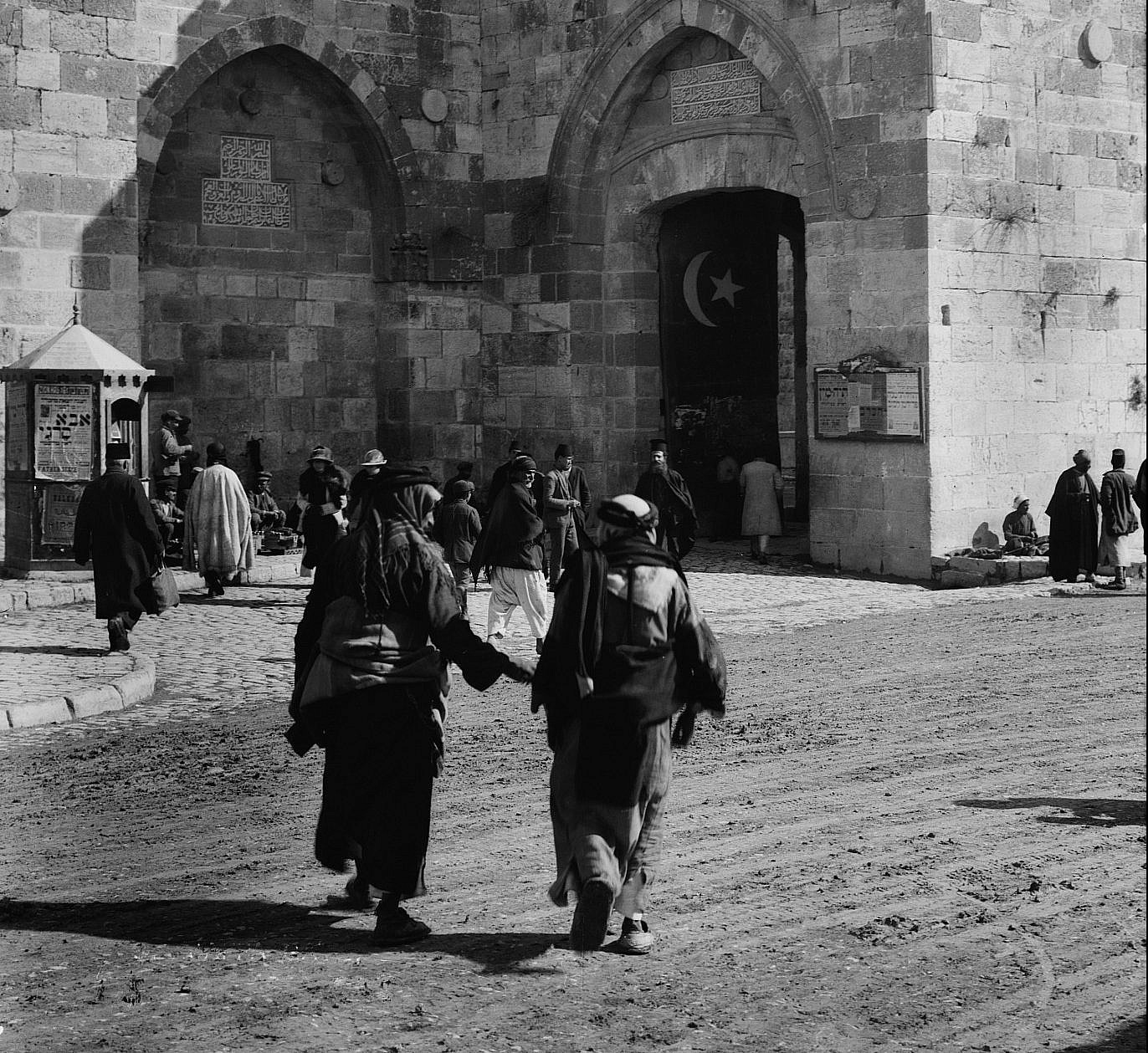
Exact location unknown, men walking towards the Old City, Turkish flag visible in gate. (Unknown)
In this unknown photo, two Muslim men can be seen walking towards an Old City gate. An Orthodox priest can be seen walking toward them, and there is Hebrew signage in the background, along with a Turkish crescent and star visible in the doorway.
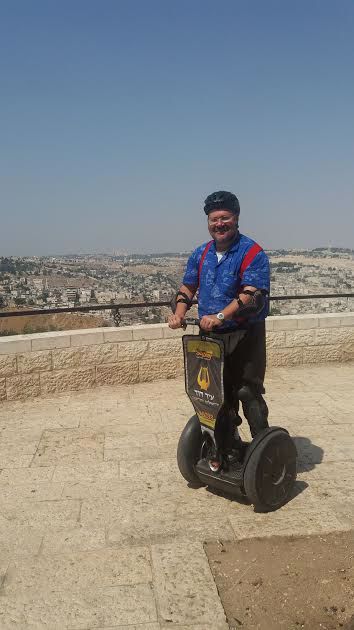
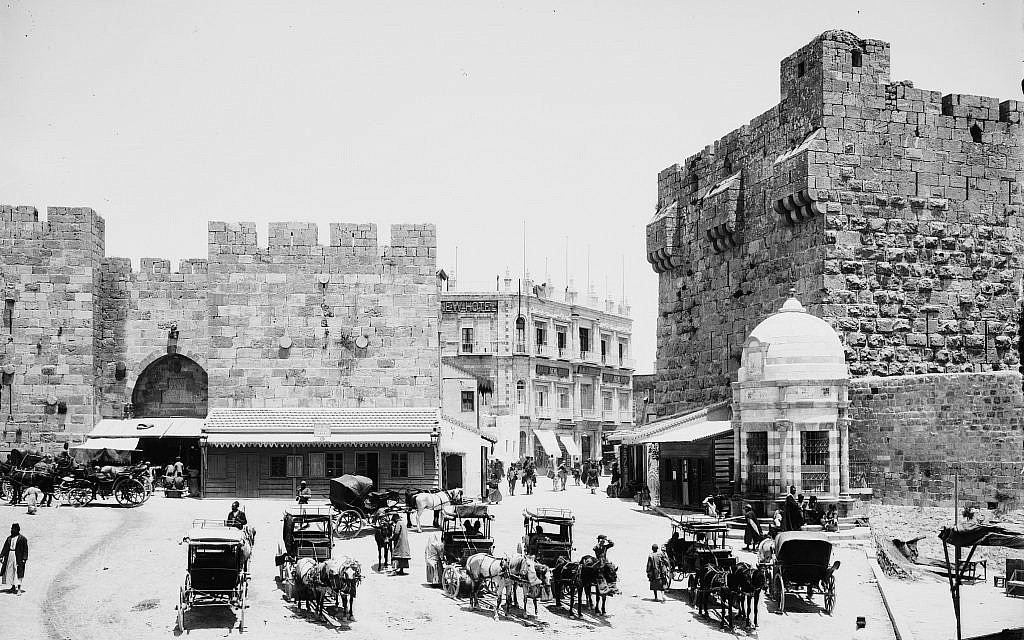
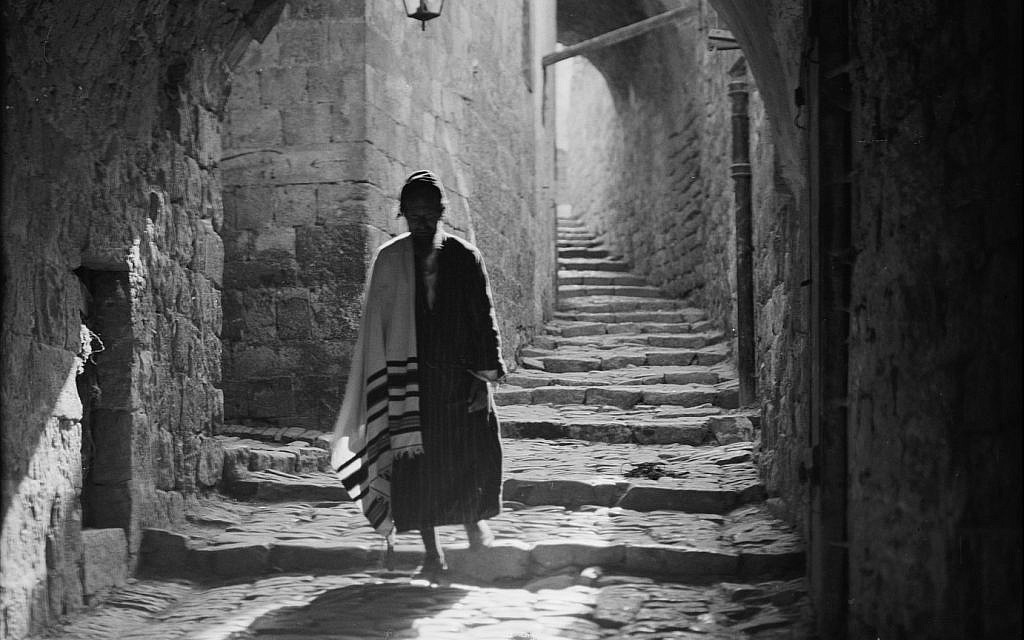
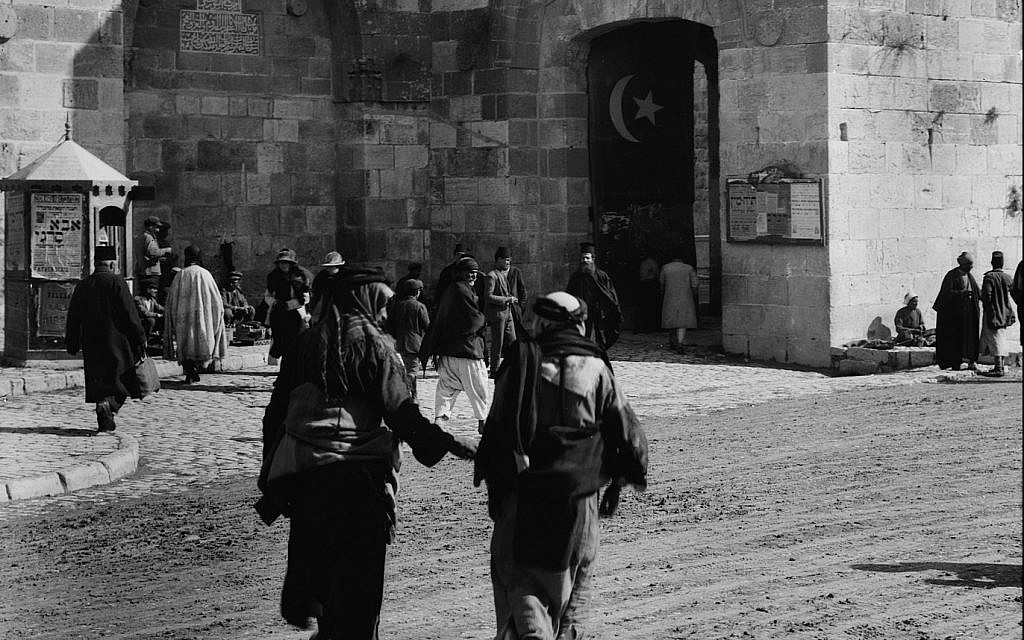
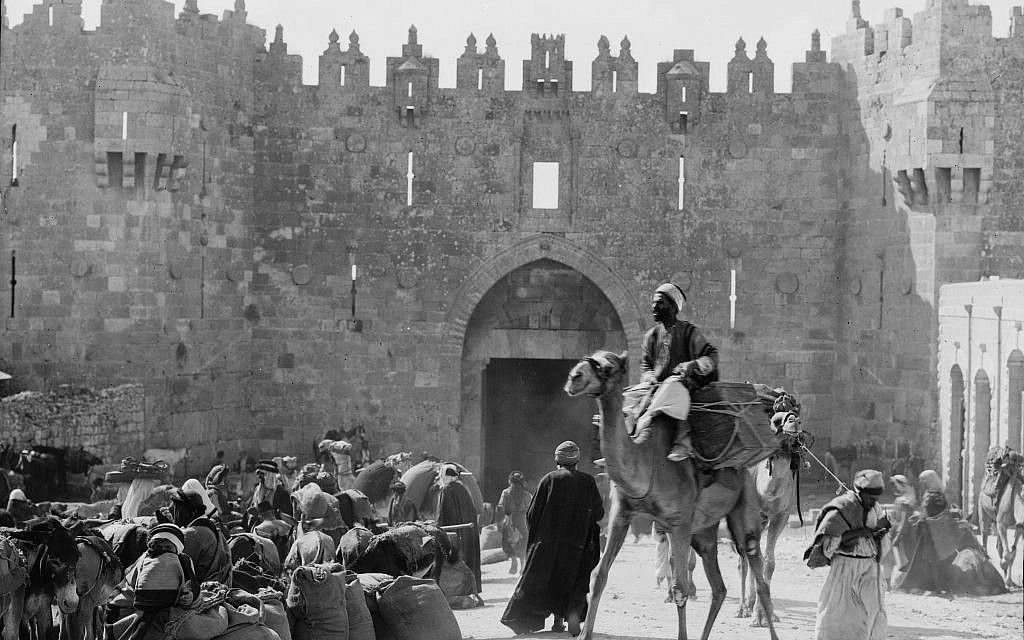
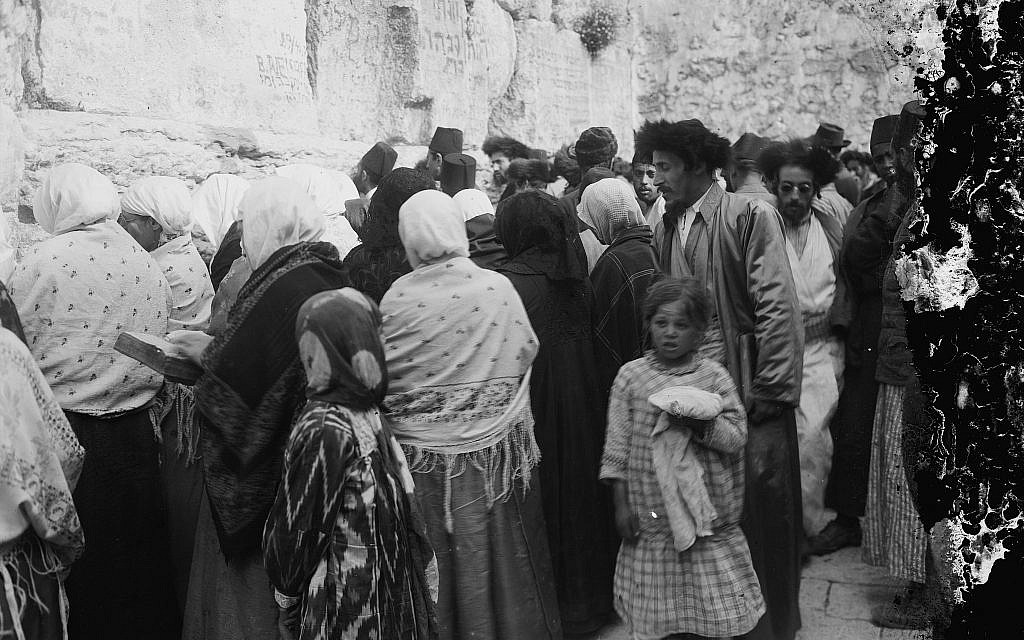
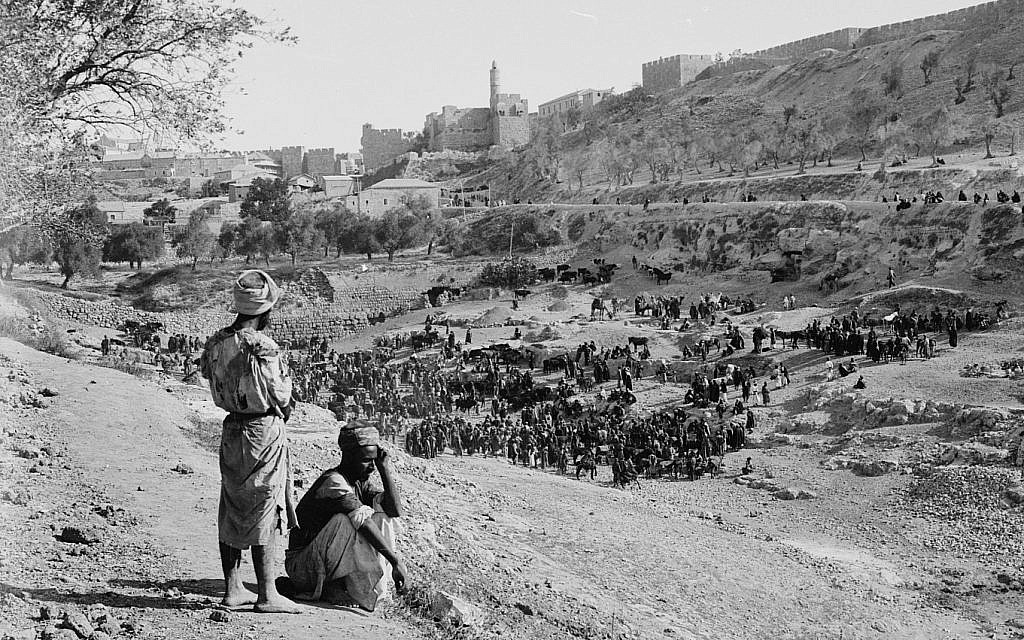
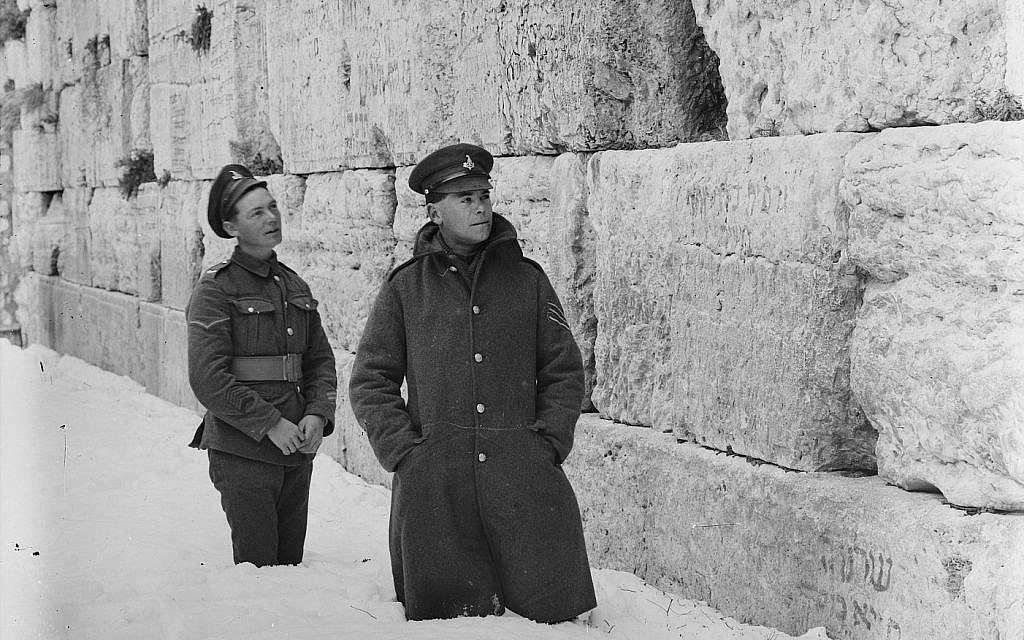












No comments:
Post a Comment